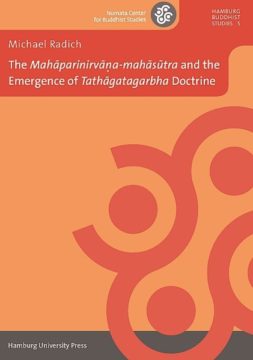Famously, tathāgatagarbha doctrine holds that every sentient being has within the body a womb for Buddhas, or an embryonic Buddha – the potential for full buddhahood. Previous scholars have seen this doctrine as originating in the Tathāgatagarbha-sūtra. In this book, Michael Radich argues that rather, the Mahāparinirvāṇa-mahāsūtra is most likely our earliest extant tathāgatagarbha text. Radich then argues that tathāgatagarbha ideas originated as part of a wider pattern of docetic Buddhology – ideas holding that Buddhas are not really as they appear. Buddhist docetic texts are clearly troubled by the notion that Buddhas could have flesh-and-blood human mothers. The Mahāparinirvāṇa-mahāsūtra is one such text, and tathāgatagarbha functions as a better substitute for imperfect human maternity: rather than a putrid, painful human womb, buddhahood springs from a “womb” inherent in every sentient being, which promises final liberation from flesh altogether.
This book should interest readers concerned with the history of Buddhist ideas, gender in Buddhism, the early Mahāyāna, the cult of the Buddha’s relics, and relations between Buddhist ideas and practice.
- Veröffentlicht am Donnerstag 29. Januar 2015 von Hamburg University Press
- ISBN: 9783943423204
- 266 Seiten
- Genre: Philosophie, RELIGION, Sachbücher, Weitere Weltreligionen
